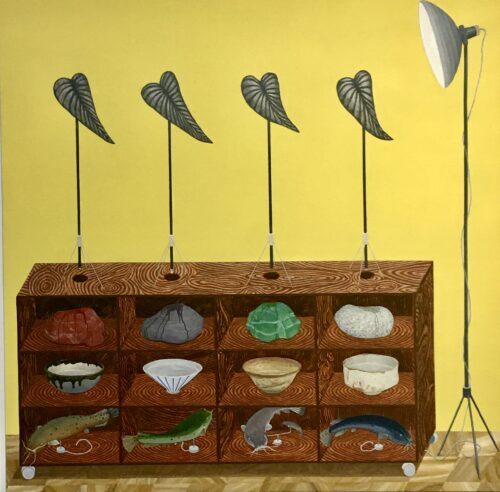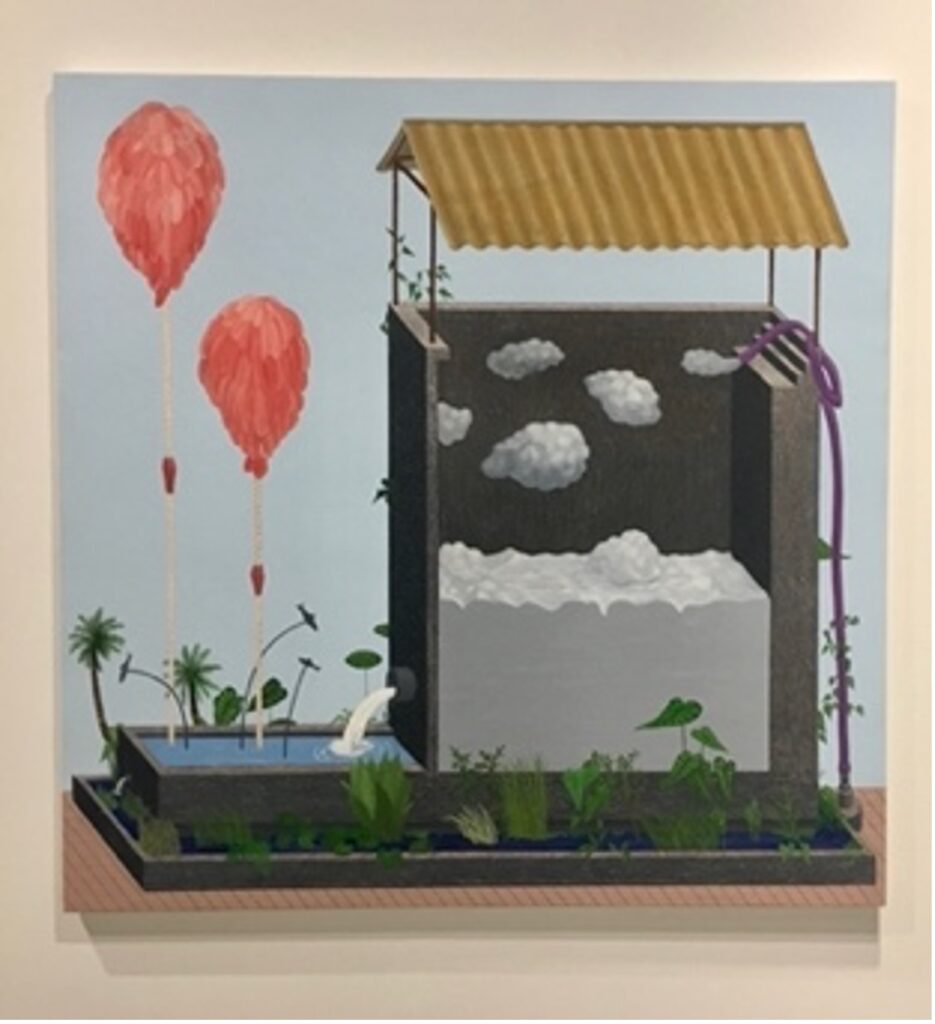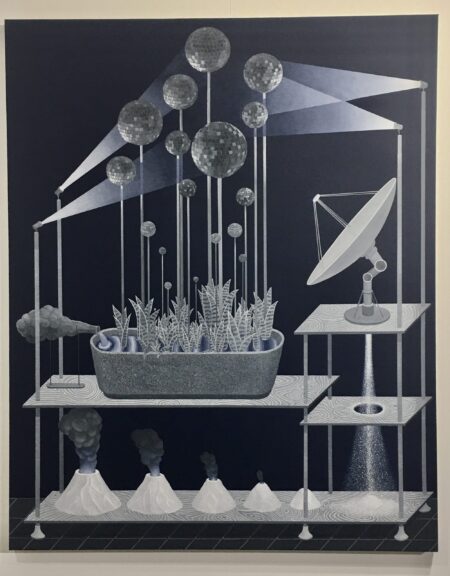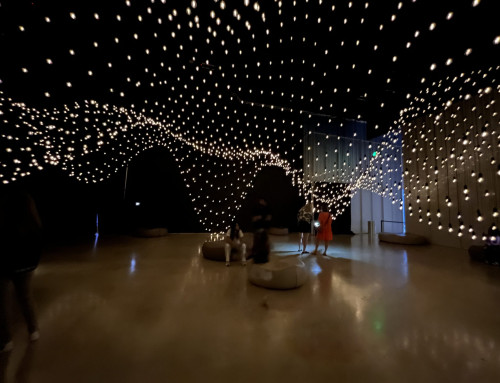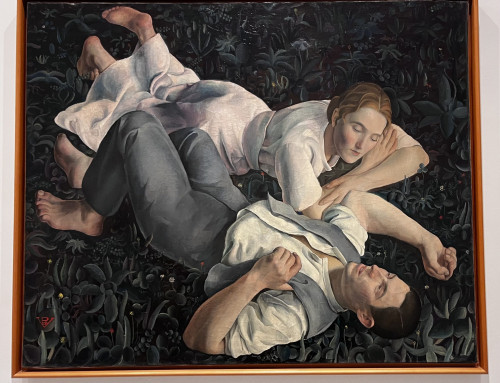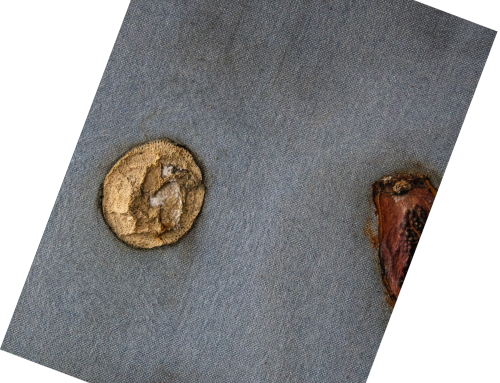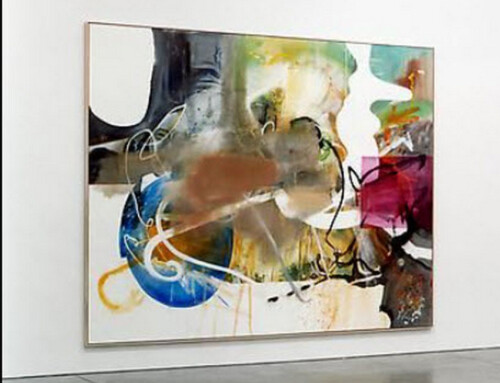The colors caught my sight first, bright yellows and soft blues. Then, the details. Minimal lines, the small objects that seem to connect to each other, the lack of perspective and yet, there is depth and balance.
The series of paintings by Akira Ikezoe at Art Basel Miami Beach 2022 is called “Not So Still Life”. Each component, whether human, animal or still object, are connected. The standing lamp, for example, gives life to the leaves; the leaves provide drops of water to the stones; the stones pass the water to the bowls; the bowls, to the different species of electric fish, which in turn provide energy to the lamp. This is what nature does, every single element is at the service of something else. It is the cycle of life.
After months of lockdown and forced quarantines due to Covid-19, a collective yearning to connect with nature has become visible. This situation changed everything that we thought we knew. It transformed our life, our jobs, our dreams, our relationship with the environment. The air we breathe has become important, flowers and plants and even pets have started to fill our space and become part of our family. Akira Ikezoe, who has always included nature in his work, began to reimagine the concept of the still life. In every one of his paintings, the inanimate objects become animated and gain a life of their own when they interact with their surrounding elements.
In fact, his exploration with nature began even before Covid. “In the 90’s, the Japanese economy collapsed,” he said. “Many local businesses were closed and empty houses and vacant lots were popping up. I was surrounded by many things that seemed to be melting into the surrounding nature, such as abandoned cars, rusty playground equipment and an elevated railroad—the construction of which has been postponed for a long time. They looked like fusions of human activity and the surrounding nature and gave me difficulty in drawing the borderline between the inside and outside of human territories.”
Ikezoe works in diverse disciplines, including painting, drawing, video and performance. “What I’m doing with art is just like trying to invade a castle which has many gates,” he explained. “No matter which gate I choose, the final destination is probably the same. Once I break in through a gate, I can open other gates from the inside, but there is always another level of closed gates to go deeper inside. Each medium has different properties. They work as the keys to open the gates.”
Majored in printmaking and graduated from Tama Art University in Tokyo, his work has a rich palette and is playful. He is touted as one of the up-and-coming artists and his work has been included in the Colección Patricia Phelps de Cisneros in New York, the Frac Normandie Caen in France and the JaPigozzi Collection in Switzerland, among others.
Ikezoe presently lives in Brooklyn, New York, and when I met him at the Art Basel, I asked where he is from in Japan. From Kochi, he replied. He noticed my blank look, smiled and said: It’s ok, nobody knows Kochi.
Maybe nobody knows the small coastal city of Kochi but growing up surrounded by its nature, Akira Ikezoe in his parallel universe, tells us that still life is not so still


